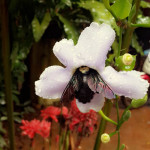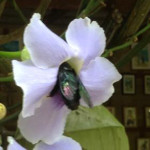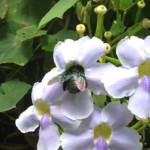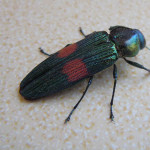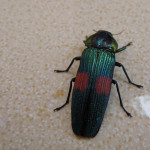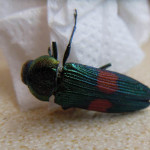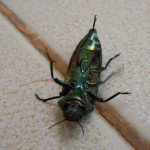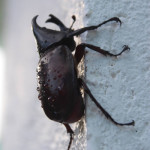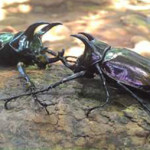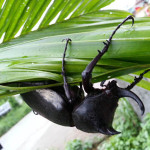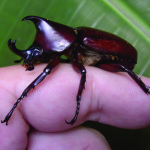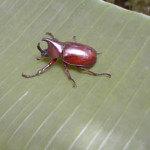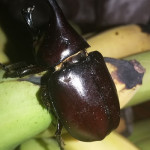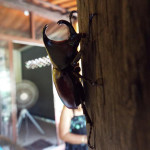Lesser-Banded Hornet (Vespa affinis)
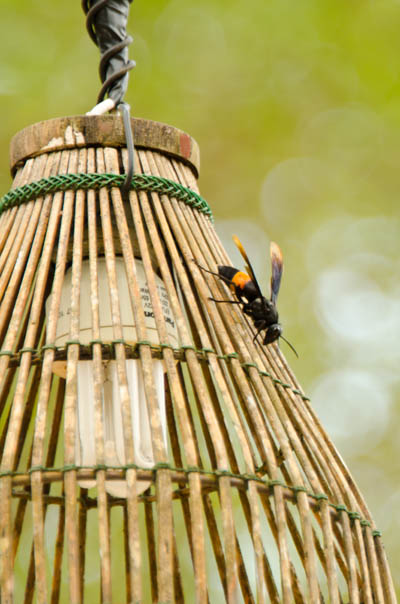
Image Copyright David Vinot
Last Observed: February 2015, Koh Chang
Observed By: David Vinot
Not to be confused with the Greater-Banded Hornet (the bands are… less) the Lesser-Banded Hornet is a native Koh Chang insect species.
Hornets are a sub-family of wasps that have a venom that is slightly more painful to humans. they are also able, like bees and wasps to summon the whole nest to attack by releasing a special attack pheremone.
Hornets Wikipedia
Tussock Moth (Calliteara horsfieldii)
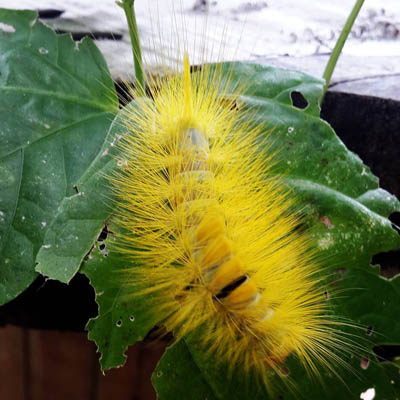
Image Copyright Perry Stevens
Last Observed: 2015, Koh Chang
Observed By: Perry Stevens
This super-hairy caterpillar eventually develops into the Tussock Moth.
Tussock Moth natureloveyou.sg
Tropical Swallowtail Moth (Lyssa zampa)
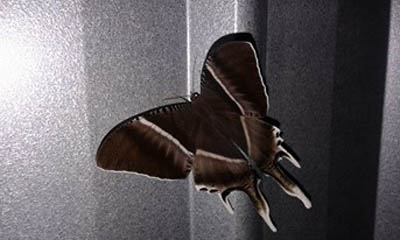
Image Copyright Tijl Adriaen
Last Observed: November 2015, Koh Chang
Observed By: Tijl Adriaen, Hans-Henrik Hansen
The Tropical Swallowtail Moth is a large member of the moth family uraniidae with a wingspan of up to 16cm.
Tropical Swallowtail Moth Wikipedia
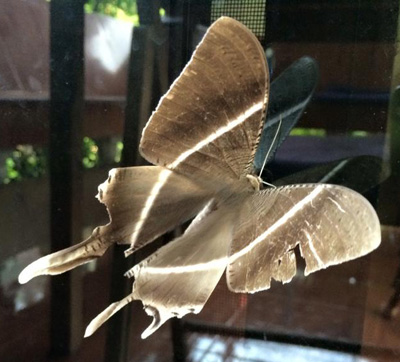
Image Copyright Hans-Henrik Hansen
Tropical Carpenter Bee (Xylocopa latipes)
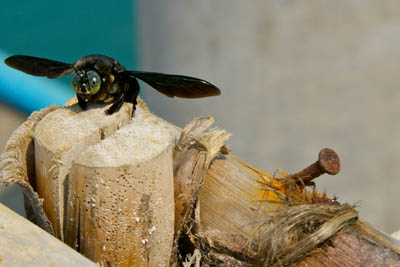
Image: David Vinot
Last Observed: 2015, Koh Chang
Observed By: Paitoon Praiboung, Perry Stevens, David Vinot
The Tropical Carpenter Bee is a large solitary dwelling bee that lives in burrowed holes in wood or in bamboo stems. It is one of the largest bees in the world and Koh Chang is a perfect habitat for it.
And get this, they mate on the wing!
Tropical Carpenter Bee Wikipedia
Image Copyright Perry Stevens
Image Copyright Paitoon Praiboung
Image Copyright Paitoon Praiboung
Wasp Moth (Euchromia polymena)
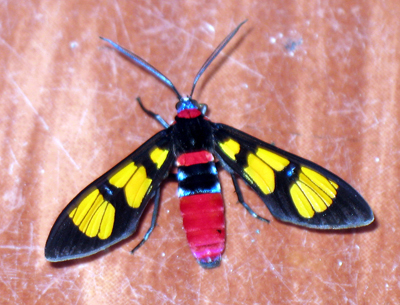 Last Observed: 2008ish, Koh Chang
Last Observed: 2008ish, Koh Chang
Observed By: Dave Hinchliffe
This stunningly-coloured moth looks like a bee or a wasp on first observation. It is also known as the Tiger Moth, but doesn’t look all that much like a tiger – must be the colour?
It is found in India, southeast Asia and parts of Australia.
Wasp Moth Wikipedia
The Rusty Palmking – Amathusia Masina
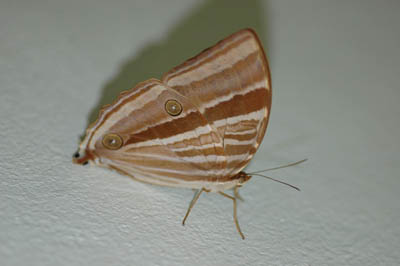
Image Copyright David Newman
Last Observed: November 2015, Koh Chang
Observed By: David Newman
The Rusty Palmking is a large butterfly that is a member of the jungle-dwelling Amathusia family of butterflies and is one of over 1,100 species of butterfly found in Thailand.
Amathusia Wikipedia
Strigoptera bimaculata
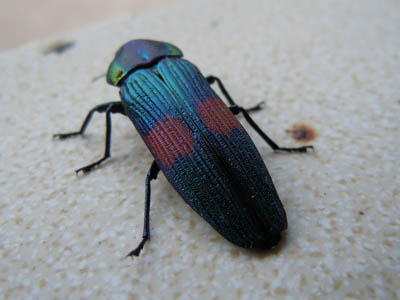
Last Observed: November 2015, Koh Chang
Observed By: Tigl Adriaen
This shiny-black iridescent bug has a characteristic pair of brown spots.
Statilia maculata Wikipedia
Image Copyright Tijl Adriaen
Image Copyright Tijl Adriaen
Image Copyright Tijl Adriaen
Image Copyright Tijl Adriaen
Asian Jumping Mantis (Statilia maculata)
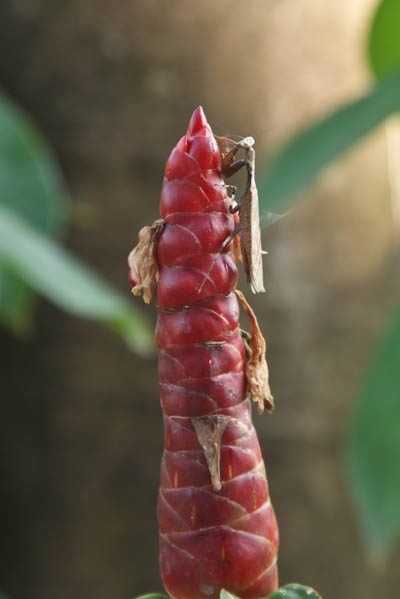
Image: David Vinot
Last Observed: February 2015, Koh Chang
Observed By: David Vinot
A small species of Praying Mantis that is native to southeast and east Asia.
Statilia maculata Wikipedia
Siamese Rhinoceros Beetle (Xylotrupes gideon)
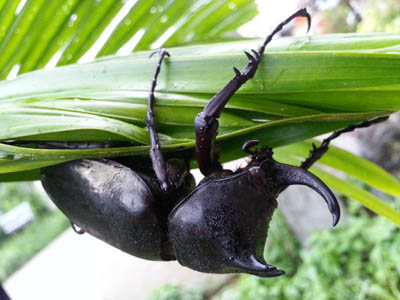
Image: Dave Hinchliffe
Last Observed: December 2015, Koh Chang
Observed By: Perry Stevens, Teerasak Thomas Suamcheepmasau, Dave Hinchliffe, Supotch White, Sam Kettel
The splendid Siamese Rhinoceros Beetle is clearly named for its horn. Only the male of the species has the horn and it used during mating season to see off its rivals when finding a mate.
These beetles are also known as fighting beetles since in Thailand, especially the north of the country, they are fought against one another as a popular betting sport. In contrast to many bloodsports the victor is the beetle that lifts his opponent off his feet.
Xylotrupes Gideon Wikipedia
Image Copyright Perry Stevens
Image Copyright Teerasak Thomas Suamcheepmasau
Image Copyright Supotch White
Shield Mantis (Rhombodera)
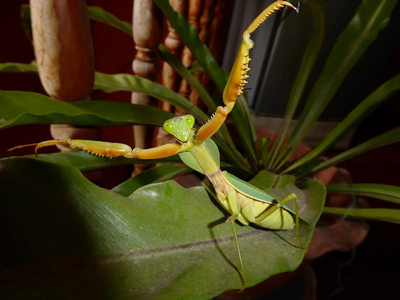
Image Copyright Cornelia Burkhardt
Last Observed: November 2015, Koh Chang
Observed By: Cornelia Burkhardt
The Shield Mantis is a member of the Praying Mantis family – some of the fiercest hunters in the animal kingdom.
Exactly which species of Shield Mantis is pictured here is unclear but it’s definitely of the Rhombadera genus.
Rhombodera Wikipedia






